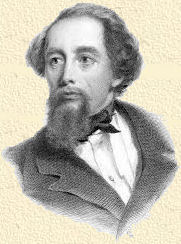|
|
||||||||||
| Go to: | part 1 | part 2 | part 3 | part 4 | part 5 | part 6 | part 7 | part 8 | part 9 | part 10 |
|
|
||||||||||
 British writer Charles John Huffam Dickens was born on
February 7, 1812, in Landport, Portsmouth. Although the Dickens family
belonged to the middle class, young Charles had to interrupt his education
when his father was imprisoned for his debts. Charles went to work in a
factory to support his family. At the age of fifteen he ended up at a
solicitor's office where he taught himself shorthand and then got a job as a
political reporter. British writer Charles John Huffam Dickens was born on
February 7, 1812, in Landport, Portsmouth. Although the Dickens family
belonged to the middle class, young Charles had to interrupt his education
when his father was imprisoned for his debts. Charles went to work in a
factory to support his family. At the age of fifteen he ended up at a
solicitor's office where he taught himself shorthand and then got a job as a
political reporter.Dickens showed a great interest in the magic lantern from an early age. Mary Weller (Charles' nurse) recalls two of the profane occupations of the small boy: ‘Little Charles was a terrible boy to read, and his custom was to sit with his book in his left hand, holding his wrist with his right hand, and constantly moving it up and down, and at the same time sucking his tongue. Sometimes Charles would come downstairs and say to me, “Now, Mary, clear the kitchen, we are going to have such a game”, and then George Stroughill (his neighbour) would come in with his Magic Lantern, and they would sing, recite, and perform parts of plays. Fanny (his sister) and Charles often sang together at this time; Fanny accompanying on the pianoforte. Though a good and eager reader in these days (about 1819) he had certainly not been to school, but had been thoroughly well taught at home by his aunt and mother, a dear, good mother, and a fine woman.’ |
|
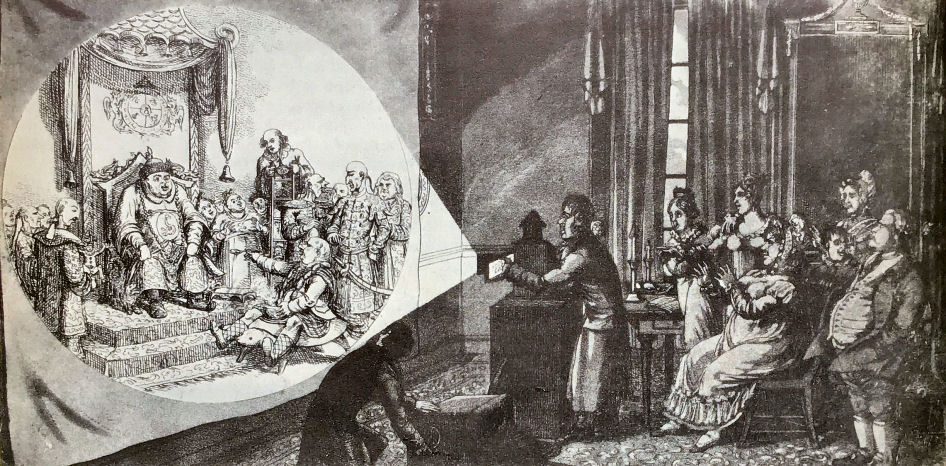 The magic lantern for which Mary Weller cleared the table. |
|
|
Around 1833 he started publishing in newspapers and magazines. 'The Pickwick
Papers' arose from a series of articles. In this work and the following
'Oliver Twist' social problems play a major role, which Dickens described in
his characteristically satirical way with a critical view of society. In the last years of his life, Charles Dickens was mainly concerned with lecturing on his work and writing plays. His strenuous literary tours through England and the United States caused him an untimely death in 1870, preventing him from completing his last manuscript, The Mystery of Edwin Drood. |
|
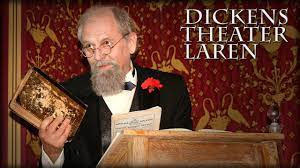
If you want to taste the atmosphere of the past, you can visit the Dutch village of Laren. In the small but pleasing Victorian-style Dickens Theatre, writer/director Else Flim takes the audience on a journey through the magic lantern with colourful glass slides. Charles Dickens actor Aad Kok, in his role of Dickens, provides information about Dickens' life in a number of countries and interprets Dickens' stories in a compelling way. |
|
| Let's quickly start with one of Dickens' most famous stories..... | |
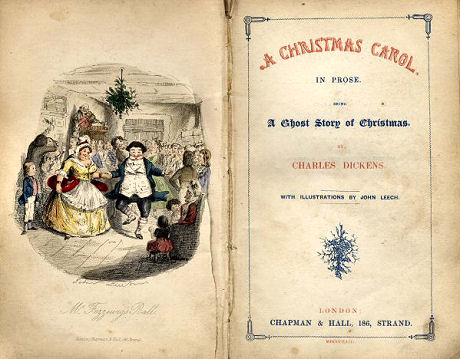 |
A Christmas Carol was first published
by Chapman & Hall on 19 December 1843 with illustrations by John Leech. It
is the story of Ebenezer Scrooge, a penny-pinching miser in the first degree, who cares nothing for
the people around him and mankind exists only for the money that can be made
through exploitation and intimidation. He particularly detests Christmas
which he views as 'a time for finding yourself a year older, and not an hour
richer'. Scrooge is visited, on Christmas Eve, by the ghost of his former
partner Jacob Marley who died seven Christmas Eves ago, and the Ghosts of Christmas Past, Christmas Present,
and Christmas Yet to Come. |
| A Christmas Carol | |
 Set of 24 or 25 magnificent slides produced by the English manufacturer Newton & Co.,
London, around 1885. Standard glass slides, 3.25" square.
Set of 24 or 25 magnificent slides produced by the English manufacturer Newton & Co.,
London, around 1885. Standard glass slides, 3.25" square. |
|
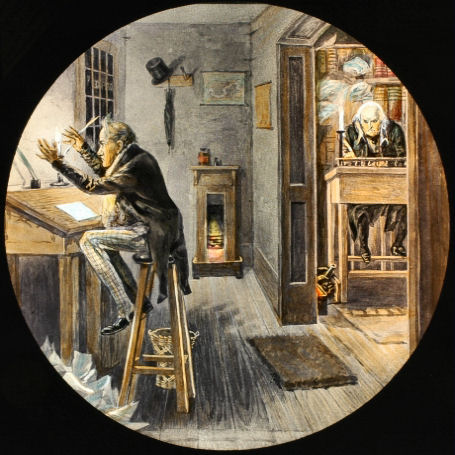 |
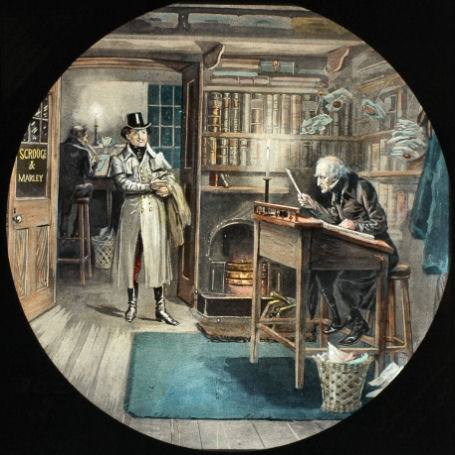 |
| The Office of Scrooge and Marley. | Scrooge and his Nephew |
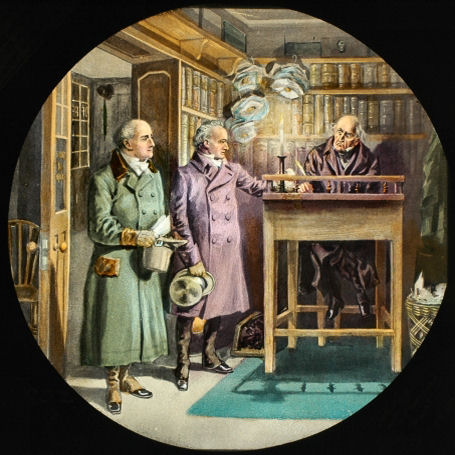 |
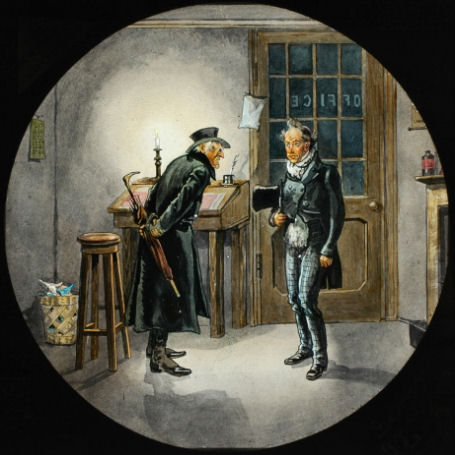 |
| Unwelcome Visitors | Scrooge and his Clerk |
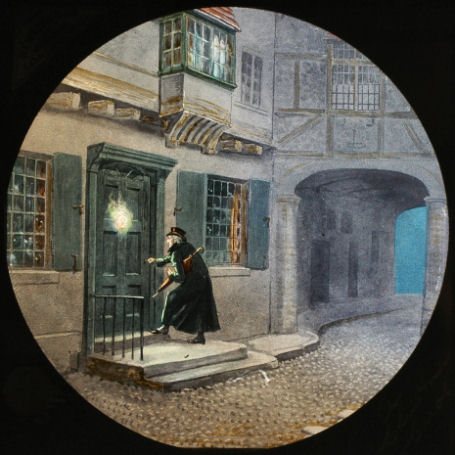 |
 |
| The Door Knocker. Marley's Face | Marley's Ghost |
 |
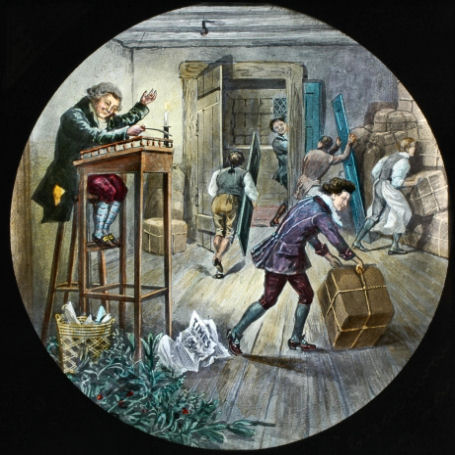 |
| The Ghost of Christmas Past | Fezziwig's Warehouse |
 |
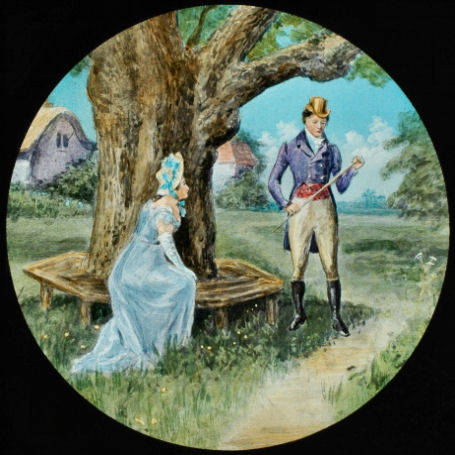 |
| Fezziwig's Ball | Scrooge and his Fiancee |
 |
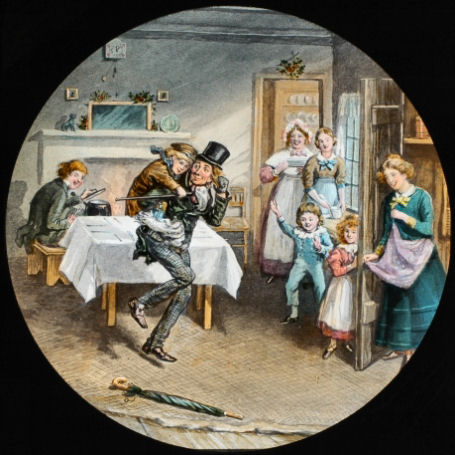 |
| The Ghost of Christmas Present | Bob Crachit and Tiny Tim |
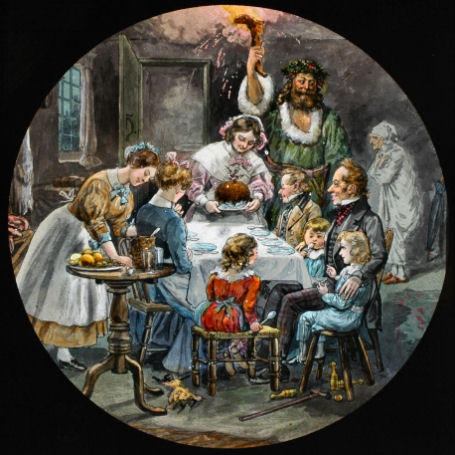 |
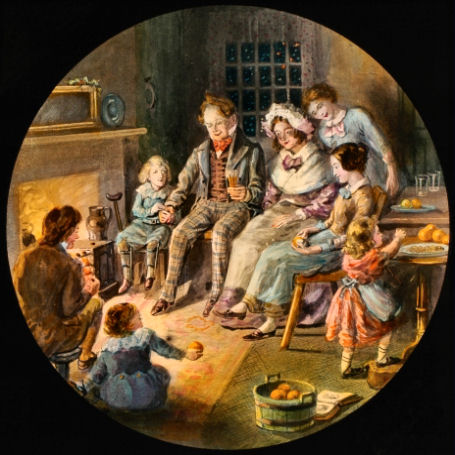 |
| The Christmas Pudding | Bob Crachitt's Christmas Party |
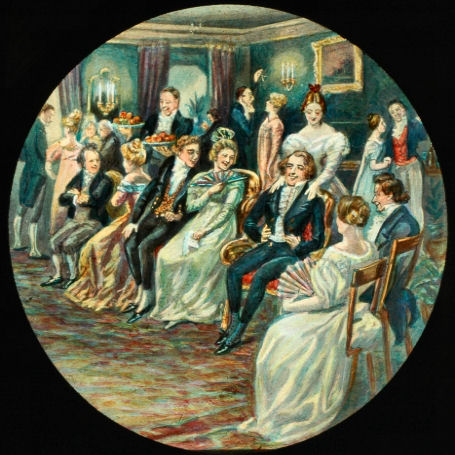 |
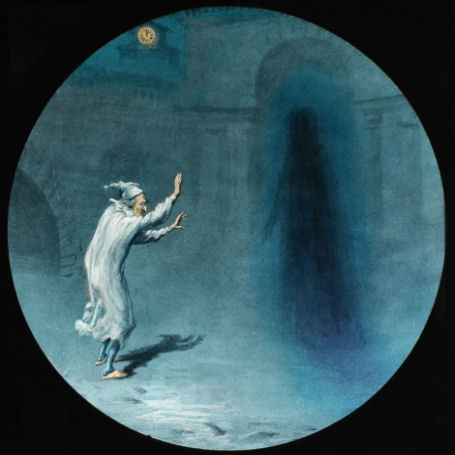 |
| Scrooge's Nephew's Christmas Party | The Ghost of Christmas to Come |
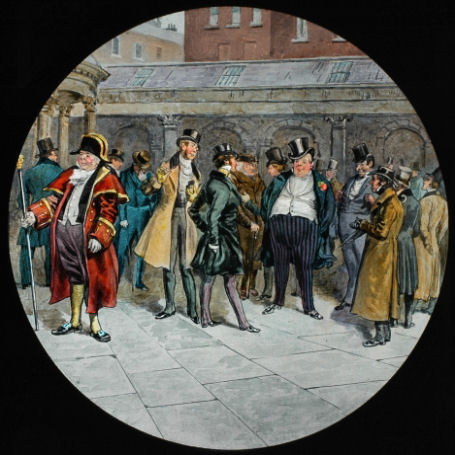 |
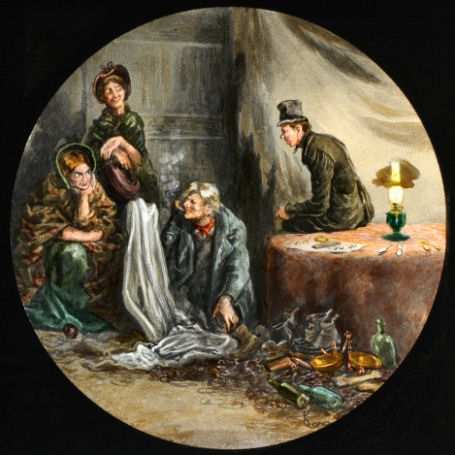 |
| On Change. Among the Merchants | Selling the Clothes |
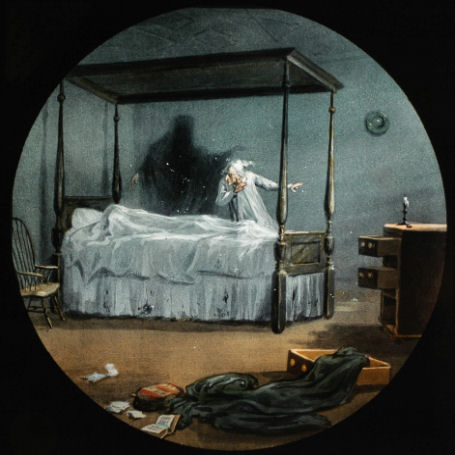 |
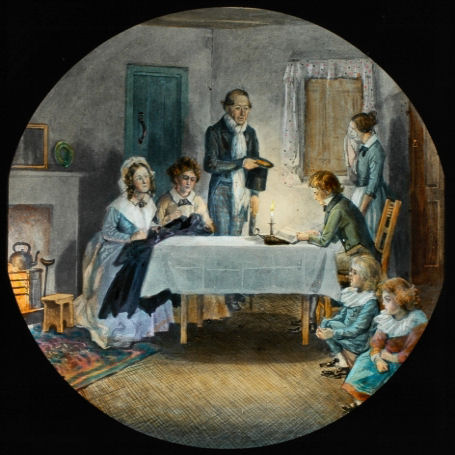 |
| The Chamber of Death | The Crachit Family |
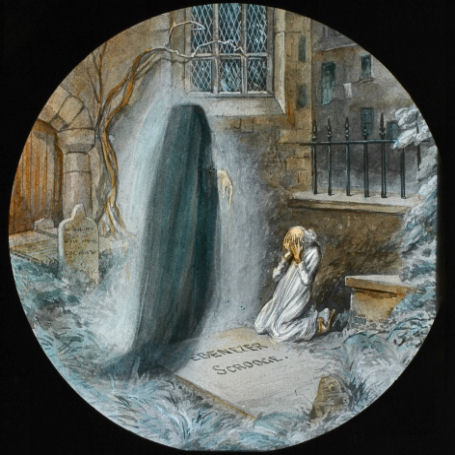 |
 |
| Scrooge's Grave | A New Christmas Morning |
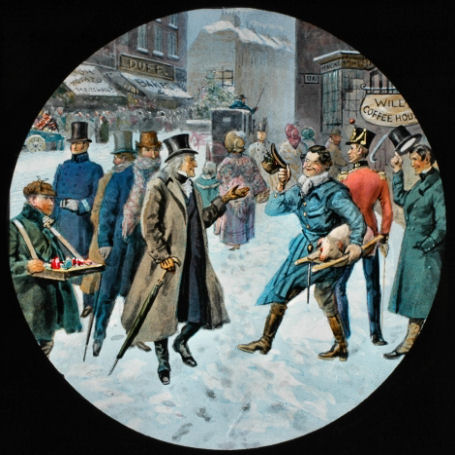 |
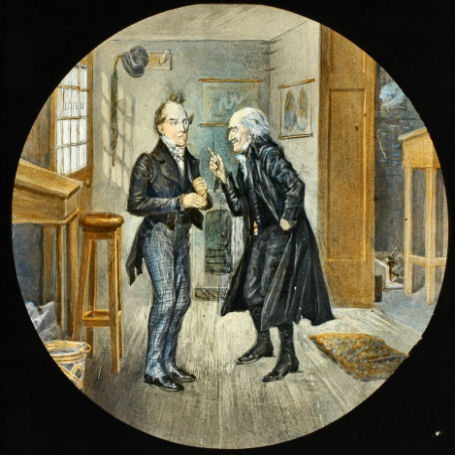 |
| Christmas Day in the Streets | Scrooge and Bob Crachit |
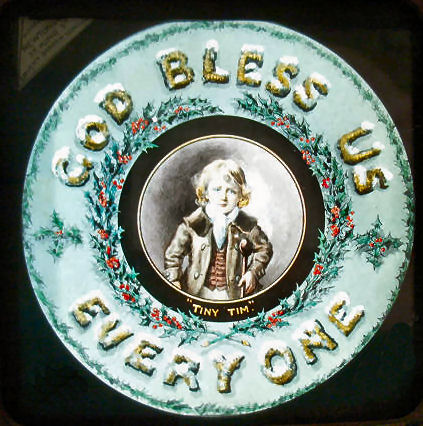 |
Sometimes a 25th slide was added showing a Christmas Wish from Tiny Tim: 'God Bless Us Everyone'. |
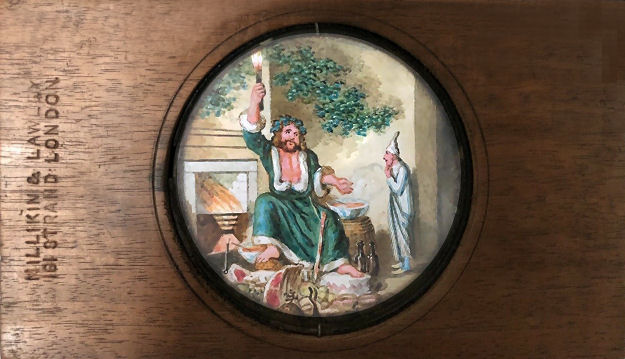 |
Four superbly painted 19th Century lantern slides in a wooden frame depicting the well known Dickens' story of 'A Christmas Carol'. The pictures resemble the etchings of John Leech, who illustrated the original edition from 1843 (see above). This set was produced by Millikin & Lawley, London. The name of the manufacturer is pressed into the wood of the frame. |
|
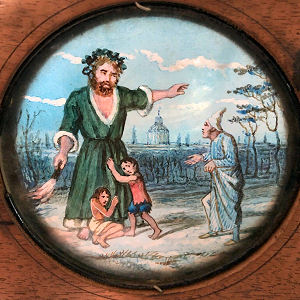 |
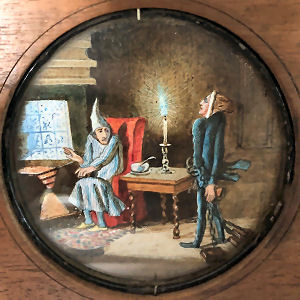 |
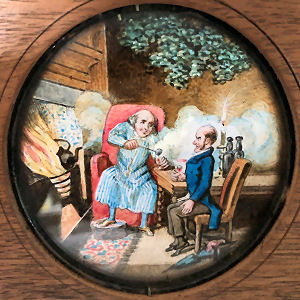 |
|
Another set of magic lantern slides presenting the story of Ebenezer Scrooge, published by Theobald & Co, England. The set consists of 12 slides. With a part of the accompanying reading and cardboard box: |
||
 |
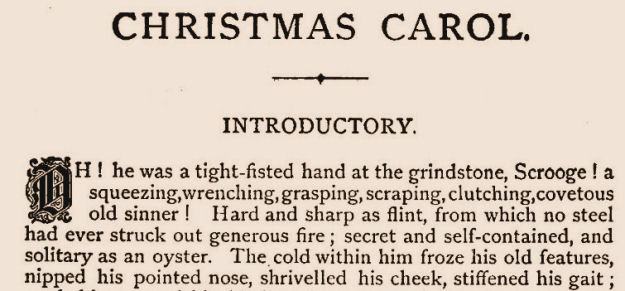 |
|
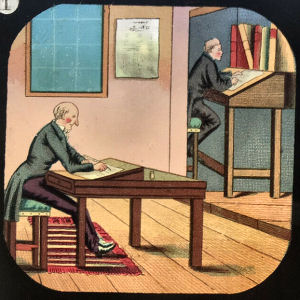 |
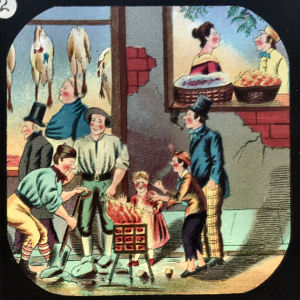 |
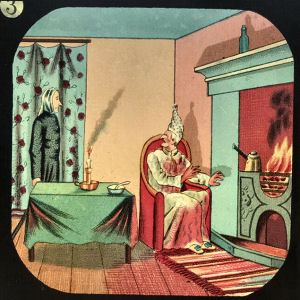 |
 |
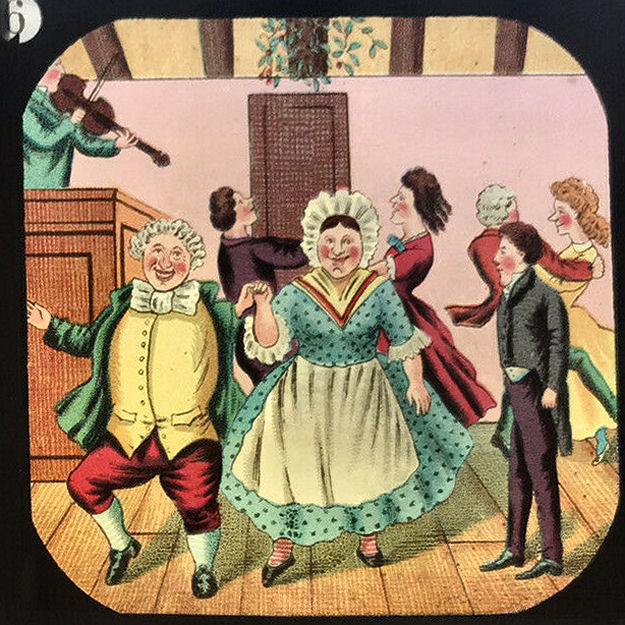 |
|
 |
||
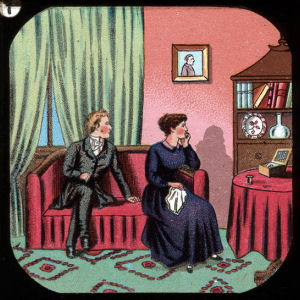 |
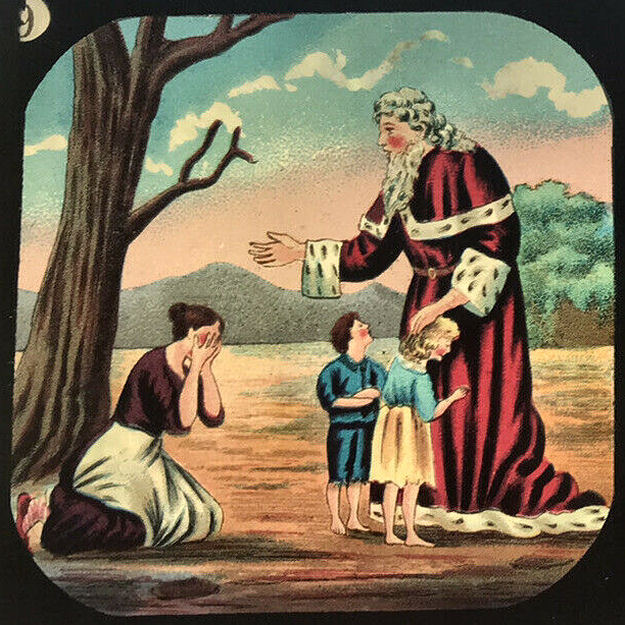 |
|
 |
||
 |
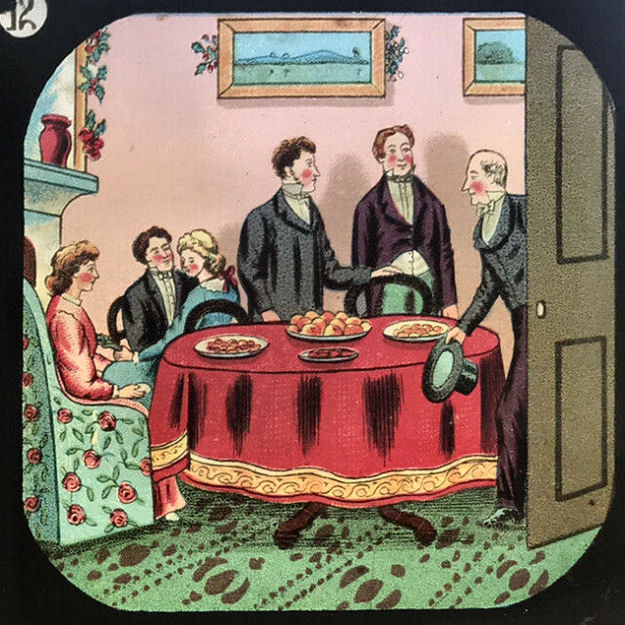 |
|
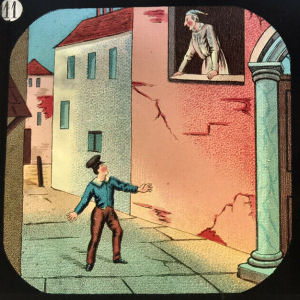 |
||
|
A set of twelve magic lantern slides mounted in a wooden frame. |
|
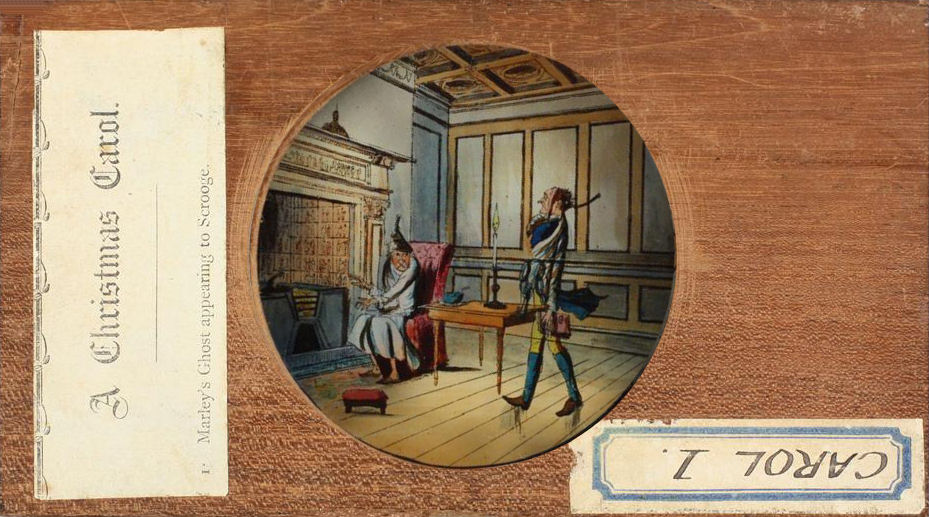 |
|
| 1. Marley's Ghost appearing to Scrooge. | |
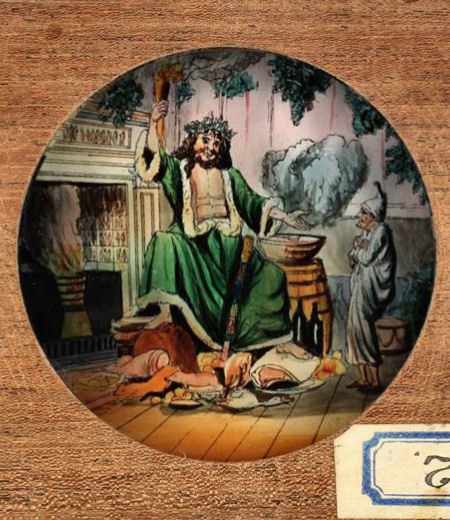 |
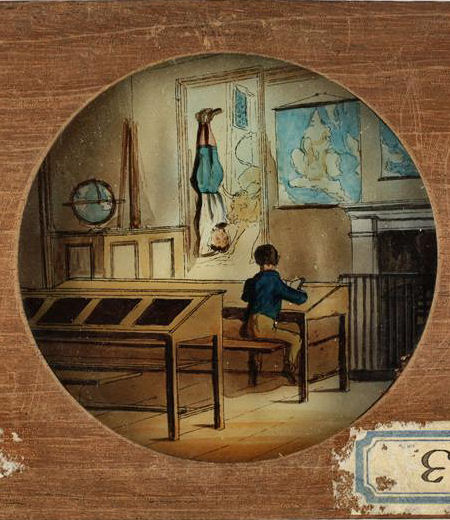 |
| 2. The Ghost of 'Christmas Past'. | 3. Unreadable. |
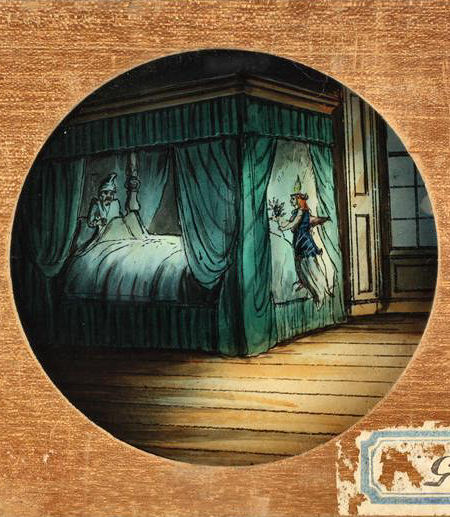 |
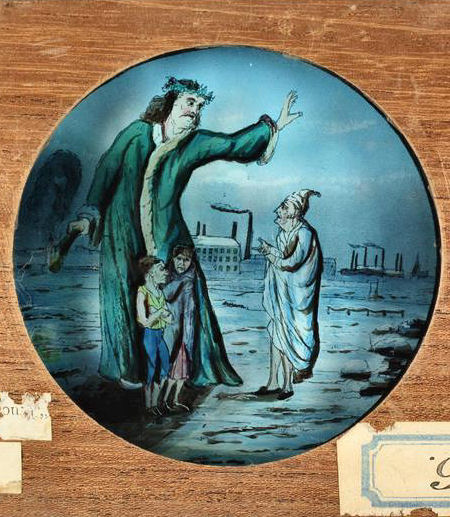 |
| 5. Unreadable. | 6. The Ghost shewing ... and Want to Scrooge. |
 |
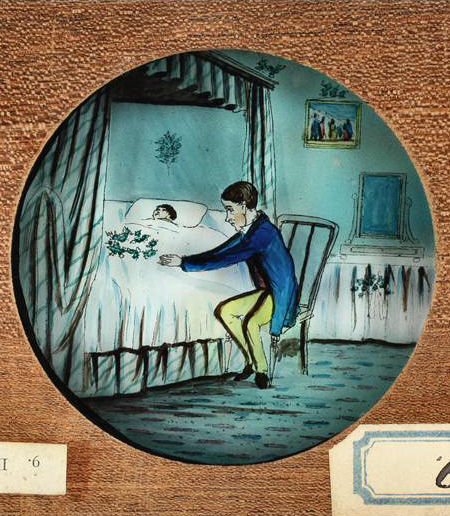 |
| 8. The Ghost of 'Christmas to Come' shewing Scrooge his Death bed. | 9. Death of Tiny Tim. |
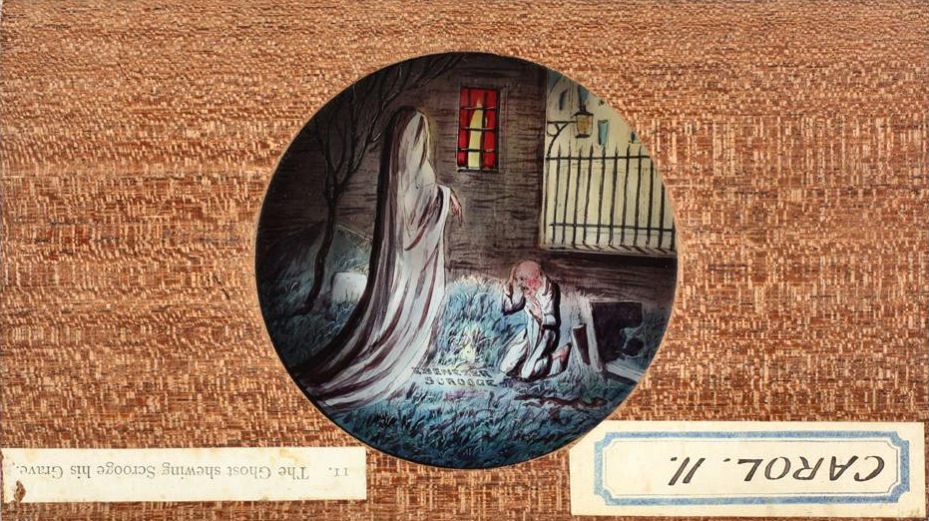 |
|
| 11. The Ghost shewing Scrooge his Grave. | |
|
The Ghost of Christmas. ...... for it is good to be children sometimes, and never better than at Christmas, when its mighty Founder was a child himself.
|
|
| Extra | |
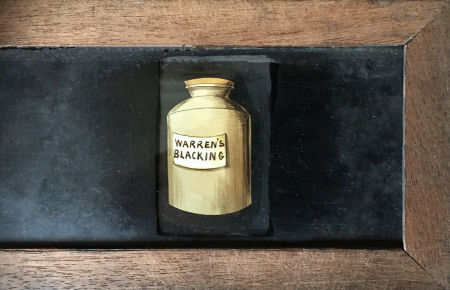 Single slipping slide. Warren’s Blacking was a leading manufacturer of shoe-black (shoe-polish) in the 19th century. Available as a liquid in bottles or as a paste in pots, the blacking was sold in every Town in the Kingdom. Notable: Charles Dickens worked at Warren's Blacking Factory when he was 12 years old. His job was to paste labels onto the blacking pots. Because he was related to the manager, he was treated with respect, except by a few older boys who once smeared him from head to toe with shoe polish. |
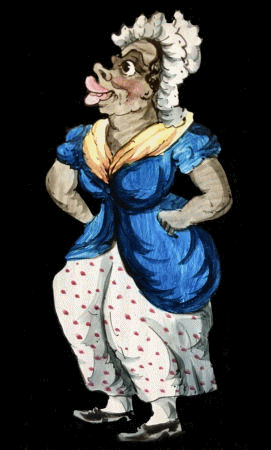 |
|
|
More Dickens..... |
| |
©1997-2024 'de Luikerwaal' All rights reserved. Last update: 11-03-2024. |
|
